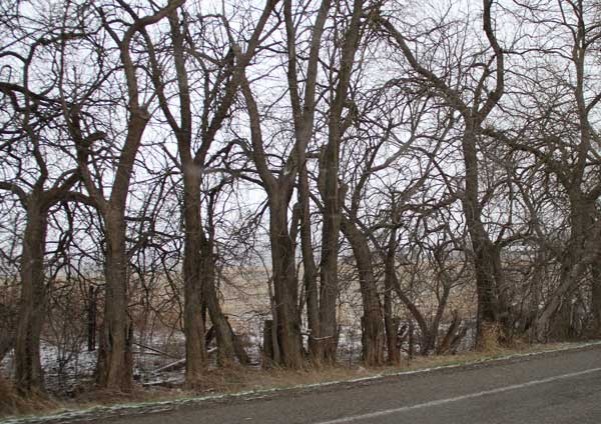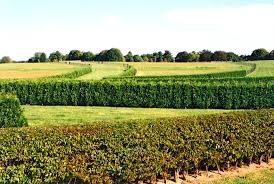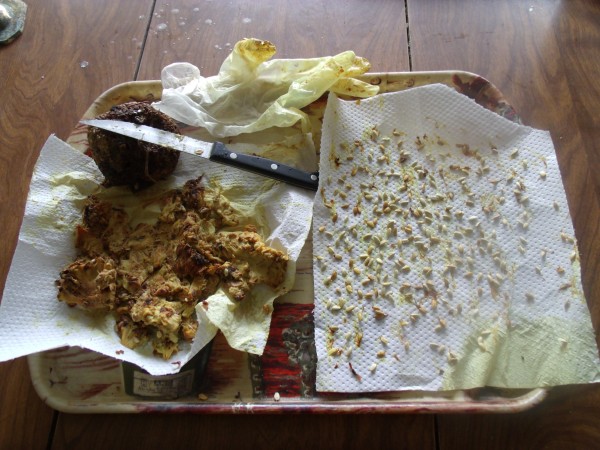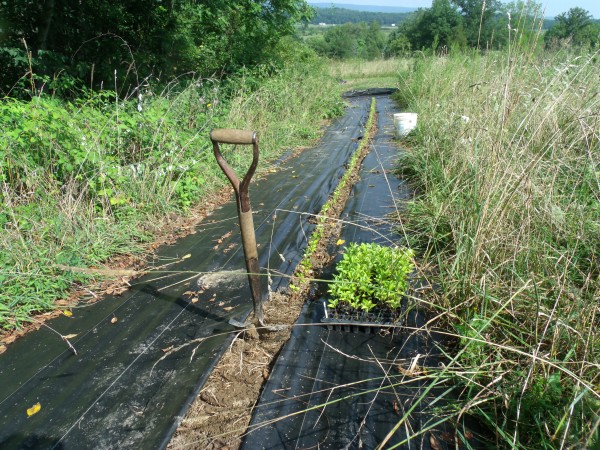-

Erin Donahue -

Christina Barkanic -

Brittany Trott -

Emily Wiley -

Jessica Reilley -

Chris Raines -

Will Nichols -

Emily Reddy -

Michele Marchetti -

Michele Frank -

James Gherardi -

Kit Henshaw -

Christina and Erin -

Kim Tait -

Erin McKinney -

Steve Spanelli -

Sam Komlenic -

Katherine Taylor Grofic -

James Eisenstein -

Jamie Oberdick -

Anna Lombardo -

LacCreta Holland -

Tony Ricci -

Local Food Journey -

Laura Young -

Kristin Camplese -

Harrison's Fresh + Local -

Danielle Matalonis -

Kristine A. -

Linda Weaver -

Naomi Elle Schwartz -

Dana Stuchul -

Cara McShane -

Brittany Smith -

Jessica Illuzzi - Frosty
-

Jessica Paholsky -

James Sechrengost -

Brad Yeckley -

Maya Althouse -

Jordan Reabold -

Kim Chase -

Maria Bryant - Alexandrea Scott
Osage oranges to provide natural fence for Jade Family Farm
Posted by James Eisenstein on 01/14, 2014 at 09:08 AM

The object pictured above doesn’t look much like barbed wire, but if you stretch it a bit, there is a connection.
What you see is an Osage orange I picked up this fall on the road near Jade Family Farm. You can find Osage Orange trees from the Great Plains to here and beyond.

An old stand of Osage Orange Trees on a Field Border
When I was growing up, my oldest friend and I would roll them down our neighbor’s driveway to see if we could get oncoming cars to squash them with their tires. We usually missed, even when annoyed motorists did not swerve. The only other thing I knew about them was that Native Americans used their wood to make bows. Indeed, one of the common names for the tree is bois d’arc, or bow wood.
But another common name is hedge apple. The Osage orange was commonly planted to form windbreaks. But it had an even earlier use. Before the invention of barbed wire it was planted close together to form a nearly impenetrable, thorny, living fence.

A historic Osage Orange hedge
You may be aware that the FDA is currently implementing the “Food Safety Modernization Act†and is considering a requirement that wild animals be prevented from intruding into farm growing fields. If industrial agricultural corporations get their way, all crop fields would need to be fenced to keep out deer, rabbits, skunks—you name it..
At Jade Family Farm, the perimeter around our cultivated fields measures about 6000 feet. How about a nice chain link fence? Eight feet high should be sufficient to keep out deer. A fencing contractor told me it would cost a mere $118,000 to buy one plus installation.
To prepare for the worst (and because we like the idea of a living fence), we are instead embarking on a five year plan to plant an Osage Orange fence. We need to plant about 600 feet a year, four to five plants per foot. That works out to about 3,000 seeds (23 seeding flats, 128 cells each). You can get 40 seeds on Amazon for $6.00. One year’s worth of seeds—$450
OR
Since we can pick them up along the road, we could just remove the seeds ourselves. Easier said than done! Extracting the seeds is a nightmare. They are imbedded in the mushy, gooey, pulp of the fruits, and have to be removed one at a time by knifepoint or gloved fingers. It takes about an hour and a half to finish one fruit, resulting in between 100 and 200 seeds.
The technology of removing seeds from an Osage Orange.
It’s the perfect task to do while watching football games.
We grow the seedlings in the flats until late summer, then transplant them into ground cover we hopefully installed months earlier. If they survive the winter, the next spring you cut off the top to produce two lateral branches. Cut back each of them the second year and you theoretically have four branches interlocking with neighboring seedlings to form the fence.
Installing our test planting of Osage Orange seedlings last August
They also need severe pruning every year to keep them under control. Did I mention the young seedlings need to be watered regularly and weeded?
How are we going to do this? Good question. Stay tuned. Maybe these tasks would be perfect for a “crop mob.â€
A what? Wait for another blog about them.
![]() Author: James Eisenstein
Author: James Eisenstein
Bio: Unpaid Field Hand at Jade Family Farm | Former Penn State Professor
- Our Local Food Journey comes to an end
- Winter isn’t a quiet time at the farm
- Get the taste of garden season right now by growing herbs indoors
- All you need to know about PASA’s Farming for the Future conference











NO COMMENTS